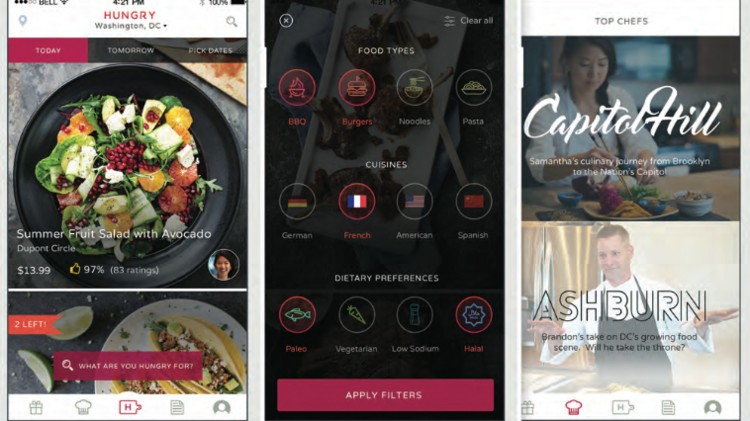You’ve heard the term “growth hacking” being tossed around before, right? In an industry filled with buzzwords, it’s one of marketing’s newest contributions to the world of annoying product and service pushing phrases. Oddly enough, though frequently used, few know what it means.
Are you one of them? Either way, the concept isn’t hard to grasp. Basically, growth hacking is the process of rapid experimentation to discover the quickest, most effective way to scale a business. For skilled growth hackers, absolutely nothing is off limits—results are all that matter.
For brothers Eman and Shy Pahlavani, though they’d never considered themselves full-blown marketers, they soon discovered the need for a robust arsenal of growth hacks after launching Hungry—the first mobile and online food platform for working professionals of its kind.
The Problem
The idea for Hungry first came about when, one regular, run-of-the-mill day at the office, Eman and Shy found themselves on the lookout for a dining experience that wouldn’t provide them with the same gross, preservative-packed foods they’d grown to loathe over the years.
After speaking with co-workers, they realized the problem wasn’t theirs alone—with working spouses, most everyone else found themselves in the same food-frenzied predicament. Instead of taking to yet another boring dollar menu, though, Eman and Shy decided to solve the problem.
The Solution
Yup, you guessed it—Hungry. Complete with both mobile and online capabilities, Hungry connects hardworking foodies with local chefs and fresh ingredients—all this through a simple, user-friendly ordering system. Thanks to Hungry, long gone are the days of fast food and fries.
As is often the case in business, however, a good idea wasn’t enough to make Hungry a reality. And while search and social certainly helped Hungry grow, the Pahlavani brothers decided to build their hacking efforts around one of man’s greatest weaknesses—his stomach.
Was it an unconventional approach to taking a business from idea to integration? Absolutely. That said, right from the get-go, it worked like a charm. In fact, after causing numerous investor bellies to grumble during initial pitches, the duo managed to land $2.7 million in seed funding.
With an an idea, money and plenty of nearby support, Hungry set out to make corporate catering their business’ bread and butter. In the short time Hungry has been in business, that’s exactly what they’ve done. Never before have employees been happier to stay in for lunch.
The Benefits
Sure, when office managers are able to do something nice for their employees, it’s a win-win for everyone involved, but Hungry is about more than simply satisfying cravings. It goes without saying that Hungry’s delicious, freshly-made food is great, but the benefits don’t stop there.
Furthermore, bringing hot meals into the office improves team productivity. Think about it—with Hungry onboard, long gone are the days of employees leaving the office, fighting traffic and braving the elements to find something to eat—Hungry does all of the hard work for you.
And last but not least, as far as game-changing perks are concerned, Hungry’s unique, chef-to-your-plate business model makes its catering service substantially cheaper than most meals of comparable quality. By cutting out the middleman, those in charge capitalize on the savings.
It’s Only the Beginning
Office catering is a $26-billion industry. By focusing on larger orders, Hungry claimed a sizable portion of it in no time. And though much is likely to change in the coming years, the company won’t ever get far from the growth hack that first brought them big success—hunger.
Opinions expressed here are opinions of the Author. Influencive does not endorse or review brands mentioned; does not and cannot investigate relationships with brands, products, and people mentioned and is up to the Author to disclose. Accounts and articles may be professional fee-based.

